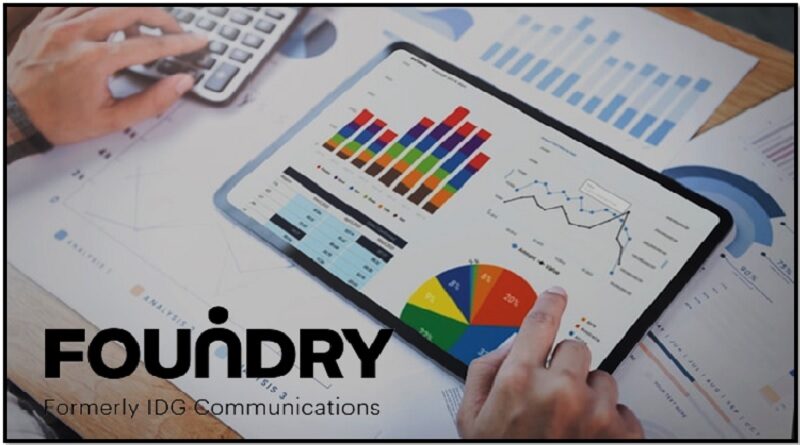Foundry Study Says 96% of B2B Marketers Have A Documented Account-Based Marketing Strategy In Place
The majority of marketers use intent data to optimise and determine what content should be given within ABM initiatives, according to new study from Foundry.
The second annual 2022 ABM & Intent Benchmarking Study, which delves deeply into the workings of account-based marketing (ABM) and its evolution and adoption compared to traditional marketing approaches, was released today by Foundry, the world leader in media, martech, and data for the tech community. The paper also examines the advantages and disadvantages of using intent data to support ABM initiatives.
ABM is a tactic in which sales and marketing teams work together to develop tailored purchasing experiences for a mutually agreed-upon list of high-value accounts. It has become more common than conventional marketing strategies; according to a Foundry survey, 96% of marketers have an ABM plan in writing. The report also reveals that 84% of respondents believe their ABM efforts have been extremely or very effective, and 94% of respondents rank ABM as extremely or very vital to their overall marketing objectives.
“We conducted this study with the hopes of gaining a better understanding of the evolution and adoption of account-based marketing, including how it compares to traditional marketing approaches in the eyes of marketers”, “In addition, we thought it would be useful and relevant to examine the uses, successes and challenges that marketers are seeing when it comes to intent data, given its critical role within ABM.” Stacey Raap, Marketing and Research Manager at Foundry.
Here is a more detailed look at the survey’s results:
Why is account-based marketing used by businesses?
ABM programmes are adopted by organisations for a variety of reasons, as various business objectives motivate these investments in ABM. The study found that some of the objectives anticipated to motivate future ABM investments include acquiring new accounts (69%), enhancing win rates (63%), upselling and cross-selling to current clients (61%) and speeding up pipeline (59%). Marketers are using a variety of ABM strategies, such as content marketing (63%), paid digital advertising (61%), organic social media (57%) and SEO (46%), to meet these objectives.
60% of companies looked at deal size when evaluating the success of their ABM programmes, while 59% examined the duration of content engagement. Deal closing rate (56%), impacted pipeline (51%) and pipeline velocity (46%) are additional success indicators.
A large 87% of those surveyed stated that they had raised their ABM spending over the previous year, with the majority claiming that they had increased their budget by 26–50% (38%). This demonstrates that businesses are investing in ABM and taking it more seriously.
“According to our research, most organizations have in place a documented account-based marketing strategy and have been running such programs for at least a year now”, “The results found that ABM is in place to become a mainstream marketing discipline that could even take the place of traditional methods moving forward.” Stacey Raap, Marketing and Research Manager at Foundry.
Additionally, ABM’s emphasis on cooperation might improve the relationship between the marketing and sales teams. According to Foundry’s research, 76% of marketers think that their organisation has great sales and marketing alignment, which is a similar result to that of last year’s study.
Intent data is critical for ABM campaigns
Intent data, which is information gathered about the consumption of web material and offers insights into customers’ interests, was also examined in the study. Intent data is used by 91% of marketers, according to the report, to decide which material should be served as part of ABM initiatives. Additionally, 41% of marketers utilise four or more sources of intent data, 95% use more than one, and 90% are expanding their use of data sources.
The measurability of intent-based marketing is one of its main draws because results can be linked directly to observable behaviour. 95 percent of marketers claimed to be able to monitor the ROI of individual intent-based campaigns. Additionally, 93% of respondents stated they use it across several channels, and 92% expressed confidence in the accuracy of their data sources.
Potential issues ABM marketers may run into
Despite the many advantages, there are still some difficulties using ABM. Quantifying ABM programme success is one of the toughest obstacles, according to 81% of marketers. Prioritizing accounts (46%) getting C-level support (34%) engaging target accounts (32%) getting opt-in contacts (31%) and making a target account list (30%) are some more challenges mentioned in the report.
Foundry discovered that marketers had trouble effectively translating data to insights when employing intent data in ABM initiatives (62%) and confirming the veracity of intent signals/insights (61%). According to the poll, the major hurdles were determining the significance of intent data (55%), coming up with a strategy (55%), and acting on intent signals or insights (23%).
About 2022 Foundry ABM & Intent Benchmarking Study
500 B2B tech marketers participated in Foundry’s 2022 ABM & Intent Benchmarking Study. In order to better understand account-based marketing (ABM), its development, and its adoption in comparison to conventional marketing strategies, Foundry conducted this poll. This year’s report also examines the success and difficulties marketers have when using intent data to power ABM campaigns. There are marketing-related job titles among all responders (19% C-level, 24% VPs, 27% Directors, and 28% managers). All of the respondents held marketing-related positions, and 20% of them were from the regions of Asia/Pacific (APAC) and Europe/Middle East/Africa (EMEA), respectively.
Please download the white paper from this link to learn more about the ABM & Intent Benchmarking study for this year. To learn more about Foundry’s new intent product, Foundry Intent, please visit this page.




